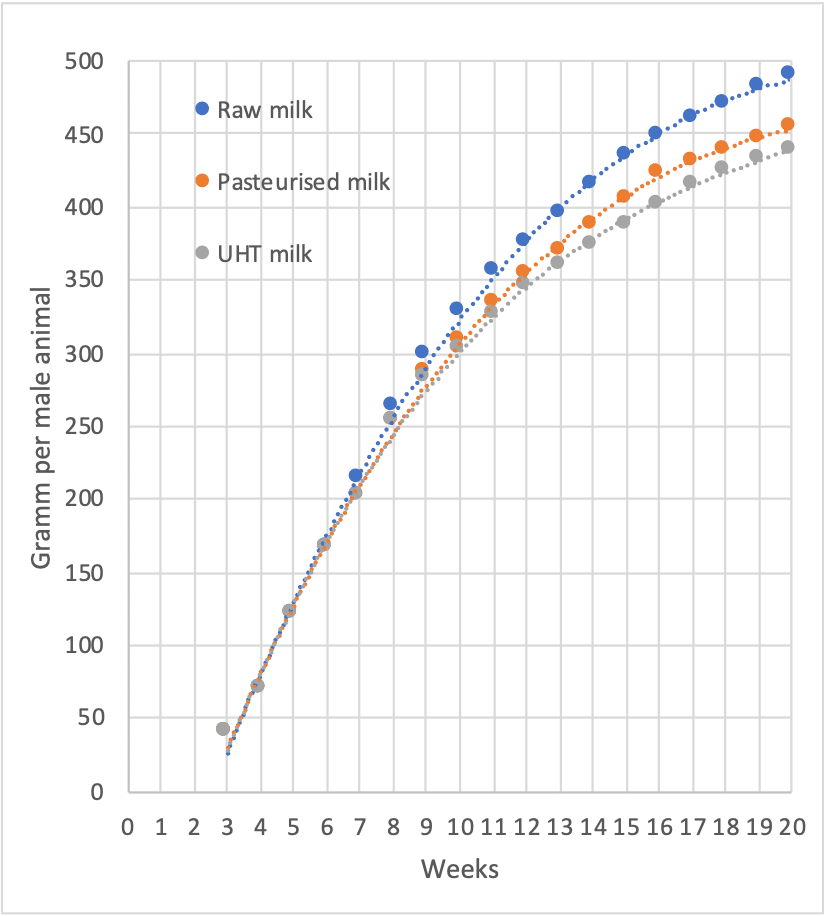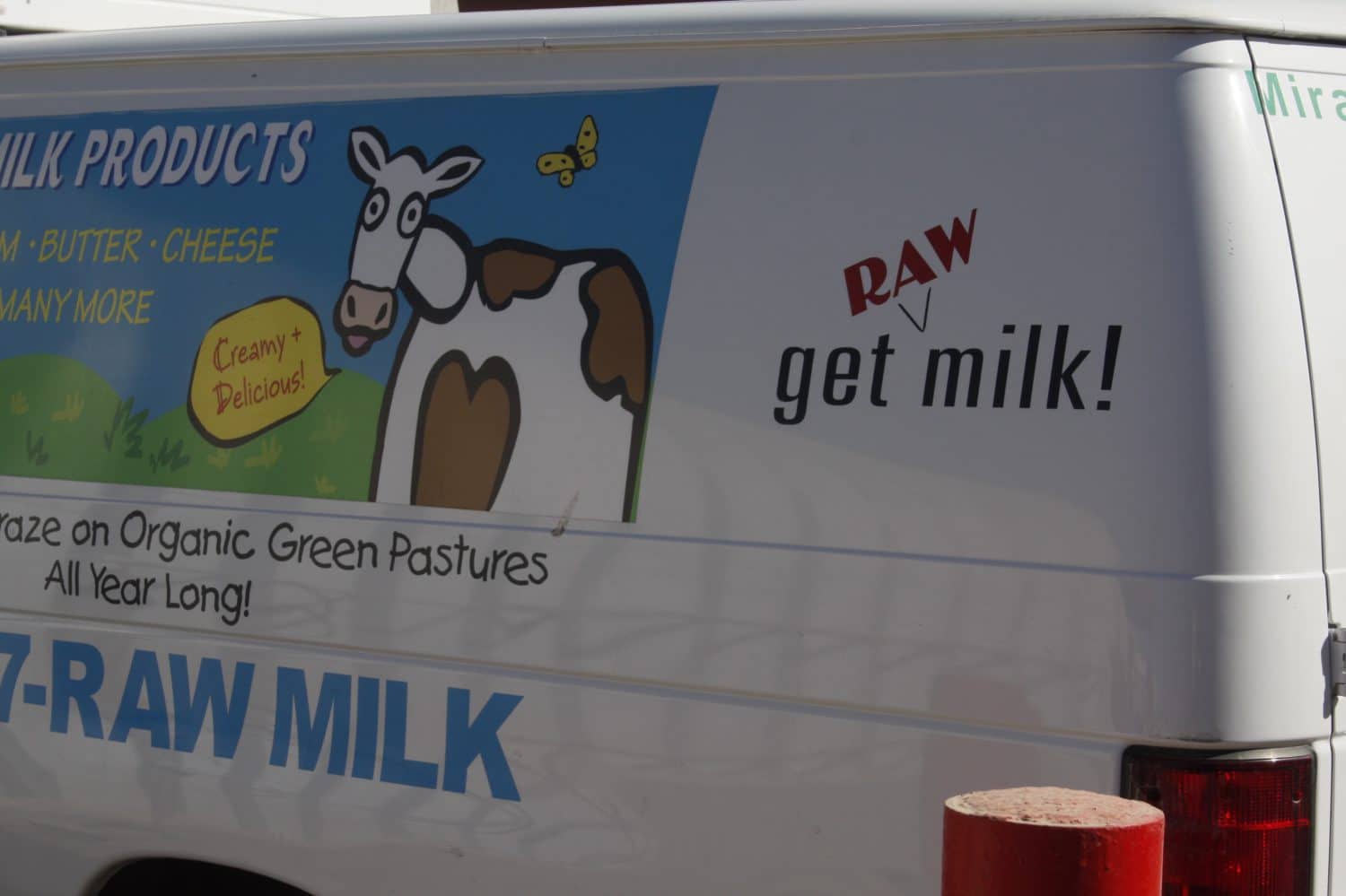The Swiss director Dr. Bernard Blanc of the Eidgenossische Forschungsanstalt für Milchwirtschaft in Bern-Liebefeld, was interested on the impact of milk heating on health. Elements of his findings were reported earlier. Together with R. Sieber, he published a study in 1980 on the effects of pasteurization and UHT heating on growth and fertility in rats. The animals were followed over 9 generations to see if accumulating effects were present across generations. A unique experiment, which is difficult to find due to the language of the publication (German) and the magazine (Alimenta Sonderausgabe). As a motivation for this research, the authors stated that in 1980 the sale of raw milk in Switzerland still amounted to 25% of the milk consumed. Nine daughter generations of albino rats were studied from 1974 to 1977. Since it was not possible to feed the rats larger amounts of liquid milk, it was decided to freeze-dry the milk. The freeze-dried powder was mixed into the feed and the milk served as the only protein source for the rats. The proportion of milk powder was high, approximately 66% of the total diet. Vitamins (A, E, B1, B2, B6) and minerals were added to the diet in order to prevent deficiencies and to equalize the supply in the different groups. There were three comparison groups: raw milk (RM), pasteurized milk (PM), (72oC, 15 sec) or ultra-heated milk (UHT), (141oC, 14 sec under high pressure). The animals were regularly weighed, and their food intake, organ weight and blood values weredetermined.
Growth and blood values
The animals grew best on RM and there was no difference in growth on PM and UHT. In the 6th generation the difference was almost 10% (RM > PM), in the 9th generation more than 10% (RM > UHT). Figure 1 shows the growth curves of the 9th generation males, which also consumed more food (RM > PM > UHT).

Over all generations, 90% of the females were fertile. However, fertility was lowest in RM (94.2%), slightly better in PM (96.7%) and best in UHT (98.1%). However, all numbers are labeled as “very good fertility”. The number of animals born or weaned was higher in the later generations at RM (RM > PM = UHT). The weight per youngster was highest in PM from the 4th generation, however, due to the larger litter size in RM, the total litter weight (= number of youngsters x weight) was highest in RM. This was found at both the beginning and the end of the nursing period. Organ weights were also different between diets, both absolute and relative to the weight of the animal. Spleen and adrenal glands were systematically heavier in RM compared to the other two groups, absolute, but not relative to animal weight. Histopathology (ie tissue preparations under the microscope) did not reveal differences in the diet groups. In the blood (serum), examined in the 6th generation animals, a number of (highly) significant differences were found in alanine aminotransferase (ALAT) , uric acid and chloride. ALAT is assessed for liver damage; triglycerides are indicators of cardiovascular disease risk and obesity; uric acid indicates breakdown of purines; chloride is a measure of the body’s dehydration. Chloride: RM << PM = UHT; Uric acid: P >> UHT = RM; GPT: RM << PM and triglycerides RM << UHT. The blood values were all more favourable for RM compared to PM or UHT and indicated a lower physiological load on the body of the rats.
The researchers referred an earlier study by Wagner (1953), which described a 30% reduction in growth between rats fed pasteurized milk compared to raw milk for 7 weeks. The researchers concluded that detrimental differences in rat body conditions and growth were found due to the heating with the UHT treatment being having the strongest negative impact.
This article is based on: Sieber, Rüst en Blanc (1980). Ernährungsphysiologischer Vergleich von roher, pasteurisierter und ultrahocherhitzter Milch in a Langzeitversuch mit Ratten.




